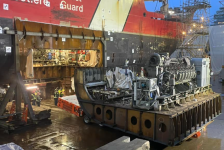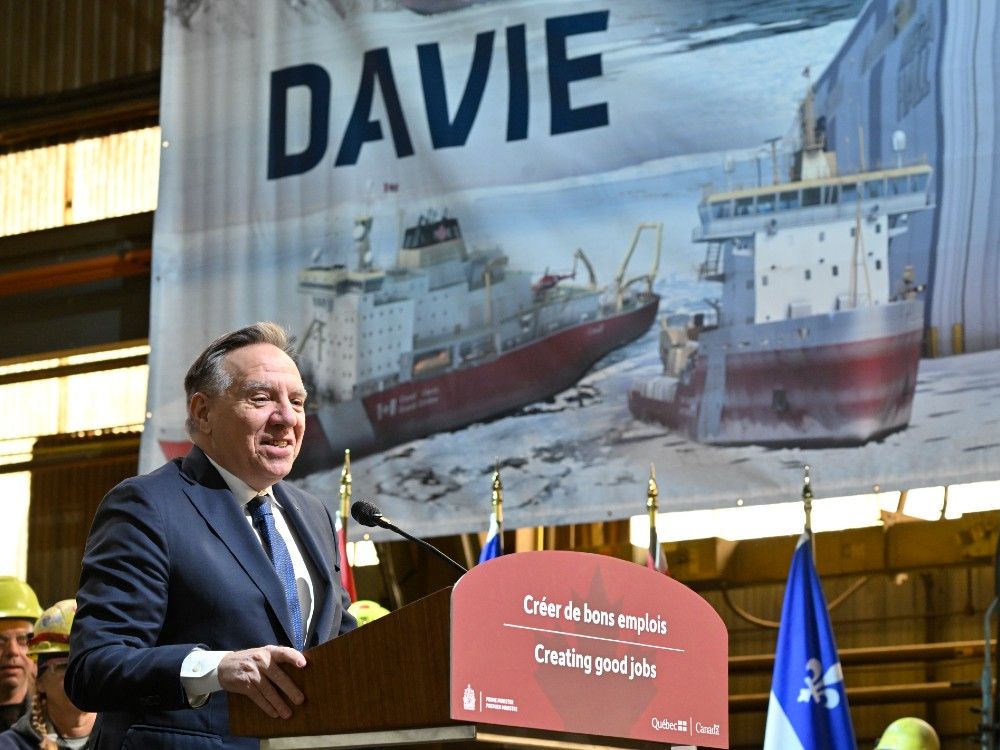"We're now seeing the timelines for them to build AOPS are continuing to come down. In fact, they are coming down to the point where it might actually cause a concern, because they might deliver the eighth and final (vessel) for the Coast Guard before we're ready to build a Canadian Surface Combatant. And we want to make sure that we maintain that workforce throughout. So right now we're, we're looking at that (issue). We're trying to figure out is there going to be a production gap there, and what would we do about that if we can. And in my perfect world we would pull the Canadian surface combatants closer to the start…we'd pull it (the program timeline) left and start a little bit earlier. We just have to know, from a design maturity point of view, (if it would be possible) to be able to do stuff like that."
"So AOPS is a success. And in terms of milestones for 2024, that's the delivery of Frederick Rolette, number five and then right after that, in 2025, the delivery of Robert Hampton Gray, the sixth and final AOPS for the Navy. They (Irving Shipyard) have already cut steel and laid the keel for the two AOPS for the Coast Guard. So that program is doing great."
"Meanwhile, we've got the joint support ship out on the West Coast, so the future HMCS PROTECTEUR is fully assembled there, you know, doing all of the, you know, installing all the pipes, pulling all the cables, to make sure that that ship is fitted out and ready to go. The ship will be launched next year. It'll be delivered to the Navy in 2025. We are seeing that that ship could have been built faster if we had a mature design at the beginning of construction. But we're benefiting from all those lessons as we deliver JSS Hull Two. The Coast Guard is benefiting, as they deliver the offshore oceanographic and science vessel in between the two JSS. So, again, that program, a Success. Delivery of JSS1 in 2025 and JSS2 in 2027."
"On the Canadian Surface Combatant project, next year is going to be a big year. We are looking for a Treasury Board Submission that should bring us into implementation contracting for the first batch of three ships. So next year, contracting TB submission into implementation, the first batch of three into delivery and cutting steel on the production test module, looking ahead to 2025. That's when we'll go to full rate production. So, we'll actually start to build the components of that ship that will be part of CSC number one."
"The other big thing we're looking forward to in (20)24, because we're going stop calling it the Canadian Surface Combatant; we're looking forward to getting it a class name. As I've said before, it will be a destroyer. It needs to have a name so that we can start to really take pride in the future of that class."
"CSC number one is going to be less than the capability we deliver…(with) CSC number 15. We're deliberately going to build the first batch of three, just to make sure we gain the efficiencies, and the certainty of building three, because just the length of time it takes to build them. You know, by the time we deliver number one, we've got to have already started building number (two and) three and we’re well advanced. Beyond that, we are exploring what makes the most sense from the point of view of batches and flights. So batches, more ships of the same type, same general, sort of capability. (Whereas) flight (is) where we see an improvement in capability. Across the 15 Canadian surface combatants I'd say it's a safe bet to say we're probably going to wind up with two flights to them.
"I have lots of thoughts on that (MCDV replacement). It would be great to have something, some form of high-end Corvette…they can take some of the burden off of the Halifax class and the future Canadian Surface Combatants all the way down to know what do we really need…and if the mission is just understanding what's happening on and under the waters and more of a constabulary role, then we can replace them (major warships) with something that's a lot like what they are right now, (the MCDV) which is a relatively simple ship, not heavily armed."
"Maybe it is, like I said, a high-end Corvette or a frigate of some sort that really can be an adjunct in battle to the Canadian Surface Combatant. We're not sure. We really want to make sure we take the time to try to find that requirement as best we can. And maybe the answer is not a single platform. Maybe the answer is a couple of different things. The other thing that we know that the future of the Navy is likely to evolve… 24 vertical launch cells is not enough on the Surface Combatant to do everything that we need that ship to do in future warfare. But the solution may not be adding more cells to that ship. The solution might be creating ships, you know, small ships that are effectively built around the idea of a 24, 36, or 48 cell, vertical launch system. They don't have all the sophisticated combat system to, you know, to fire those missiles, but they can respond to the orders from the Canadian Surface Combatant or another combatant to, to engage when required."
"Another thing, looking ahead to 2024, that we're looking for, some clarity on the Canadian Patrol Submarine Project. A memorandum to the Cabinet, to Government, providing them with options that they can look at to decide what is it (we) need in terms of a submarine capability going forward to replace the Victoria class. And finally, to deliver on the promise that we made in 1999 when we delivered the Upholders, as the Victoria class, to say, “Hey, look, we're buying this to tide us over until we can deliver the submarine that Canada really needs.” (I’m) looking forward to a lot of movement on that front next year, as we define what exactly will that look like."






